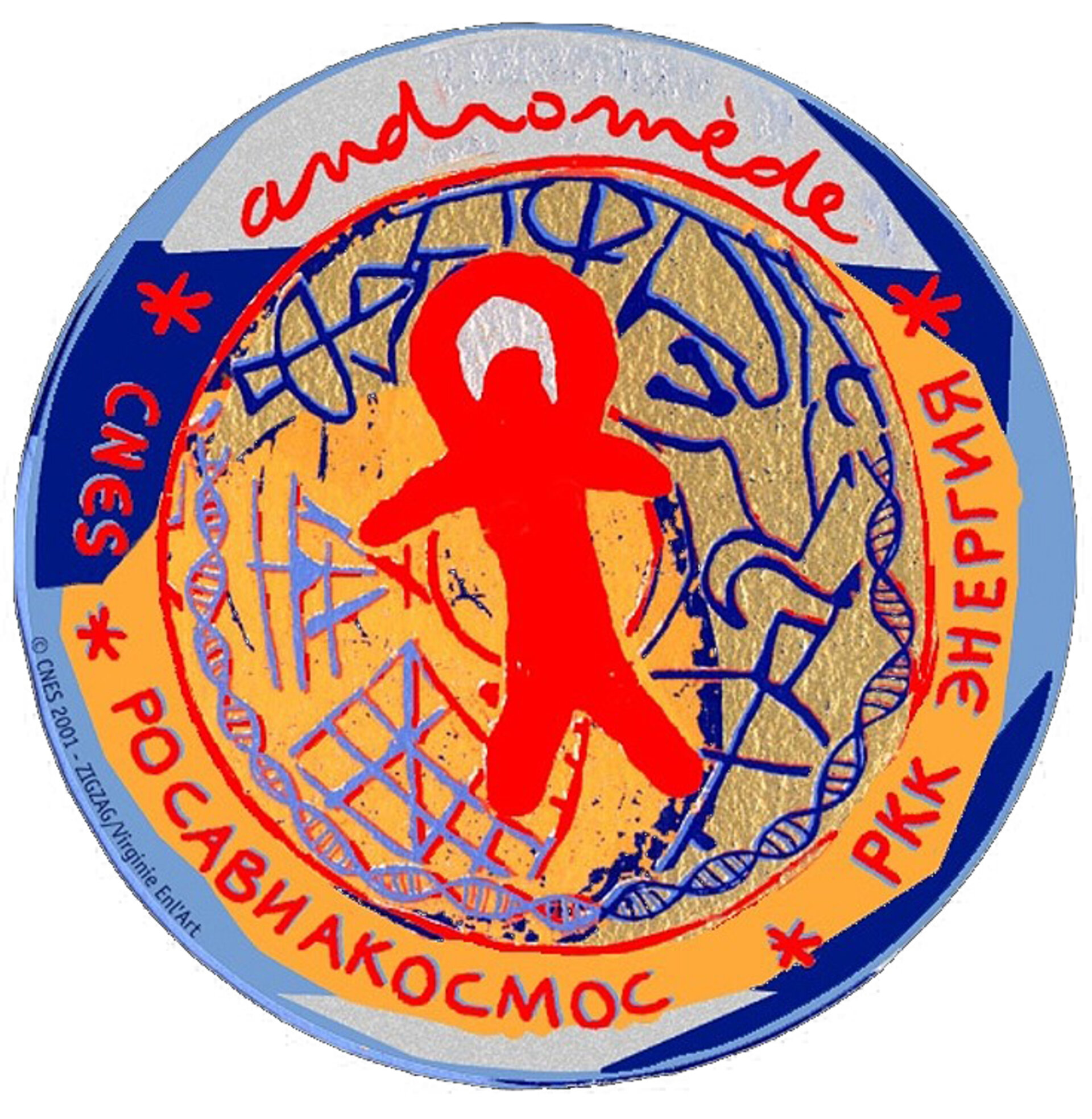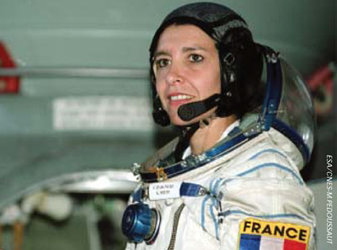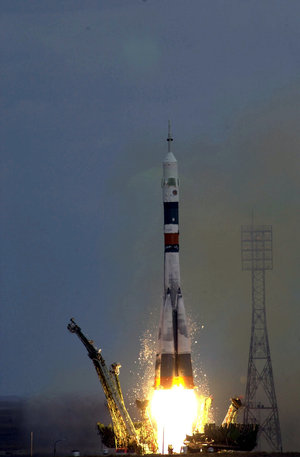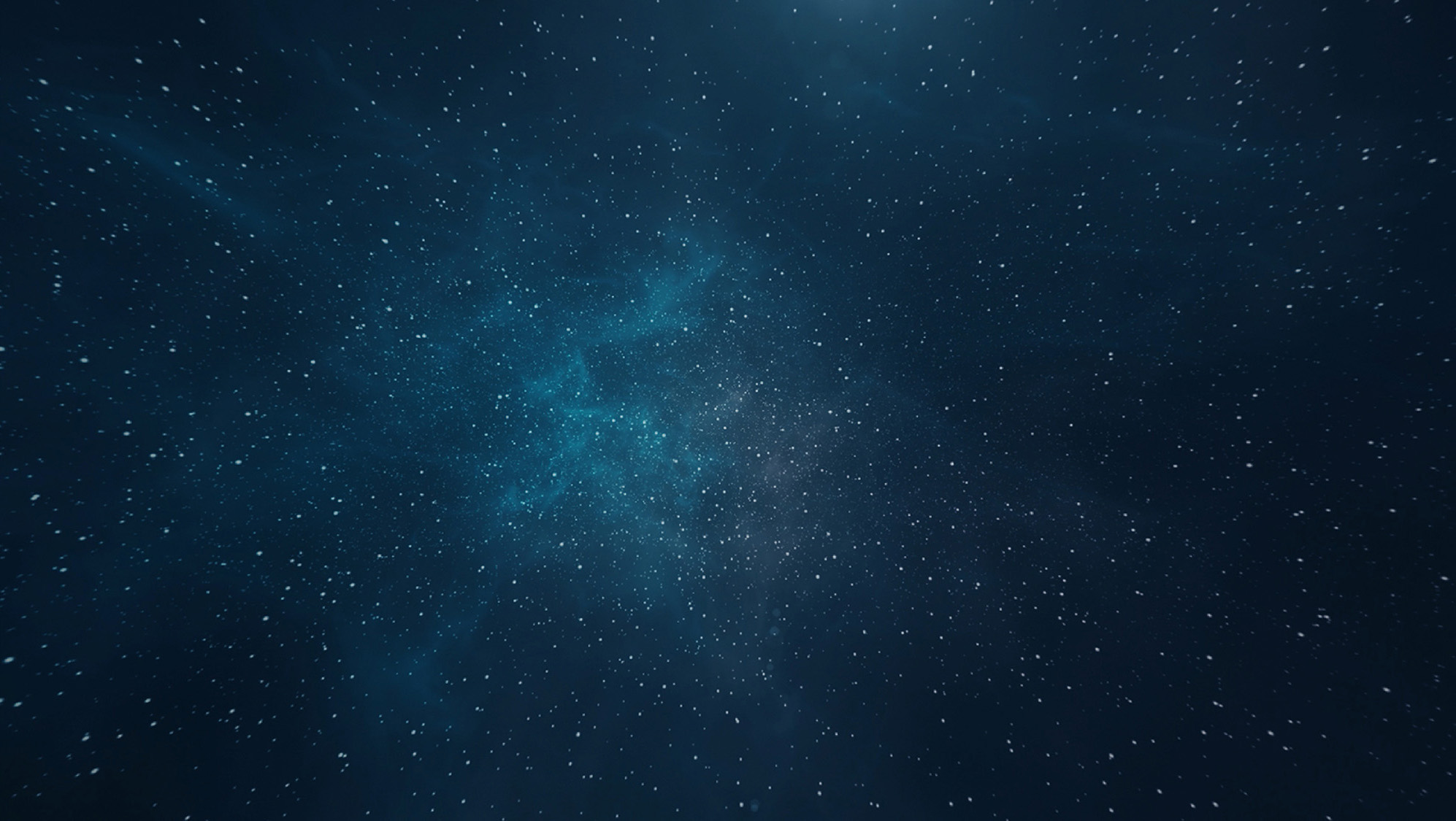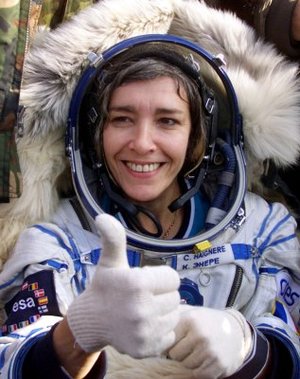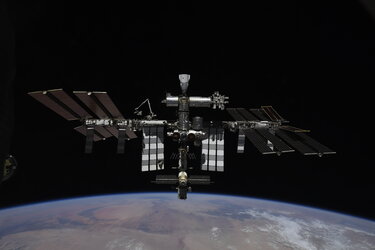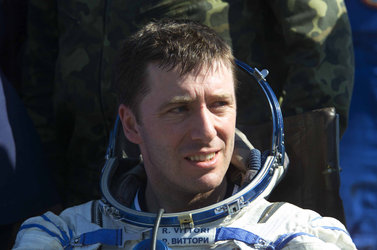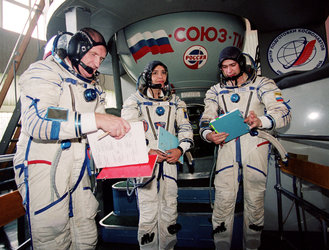Andromède
The 14th manned mission to ISS.
Soyuz TM-33 is a Russian astronaut-transporting spacecraft that was launched by a Soyuz-U rocket from Baikonur.
It carried two Russian and one French astronaut to the International Space Station (ISS). It docked with the ISS at 10:44 UT on 23 October 2001.
The new crew spent eight days on the ISS, and returned on the older Soyuz TM-32 at 04:59 UT on 31 October 2001.
The new Soyuz remained docked as a lifeboat craft for the then current crew, two Russian and one American astronaut.
MISSION STATISTICS
Mission name: Soyuz TM-33
Call sign: Derbent
Number of crew members: 3
Launch:
21 October 2001, 08:59:35 UTC, Baikonur LC1
Landing:
5 May 2002, 03:51:53 UTC, 26 km SE of Arkalyk
Duration: 195 days, 18 hours, 52 minutes, 18 seconds
Number of orbits: ~3 195
CREW
Launched
- Viktor Afanasyev (4)
- Claudie Haigneré (2) - ESA France
- Konstantin Kozeyev (1)
Landed
- Yuri Gidzenko (3)
- Roberto Vittori (1) - ESA Italy
- Mark Shuttleworth (1) - Spaceflight participant - South Africa
(1) number of spaceflights each crew member has completed, including this mission
MISSION HIGHLIGHTS
The Andromède mission, with Claudie Haigneré from France, the first European female astronaut to travel to the International Space Station, commenced Sunday 21 October 2001.
Claudie Haigneré, Victor Afanassiev and Konstantin Kozeev, both from Russia, were launched at 8:59 GMT on a Soyuz launch vehicle from Baïkonur cosmodrome in Kazakhstan. They have docked with the station on Tuesday 23rd October 2001 at 10:43 (GMT).
The purpose of this flight was to replace the Soyuz spacecraft that serves as a lifeboat on the International Space Station. The spacecraft needes to be replaced every six months because of degradation of spacecraft batteries, solar arrays and propellant.
Although the Soyuz spacecraft can accommodate a maximum of three crew members, only 2 crew members are required to actually fly the Soyuz, so the occasion is used to fly an extra astronaut to the station and to conduct extra scientific experiments.
This is the reason why such flights are termed 'taxi flights'. The mission was initiated by the French Ministry of Research and led by the French Space Agency CNES, it was performed in close cooperation with ESA and DLR.
Ten major sets of experiments were conducted during the Andromède Mission, with four student experiments linked to some of the main experiments.


